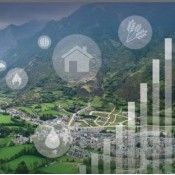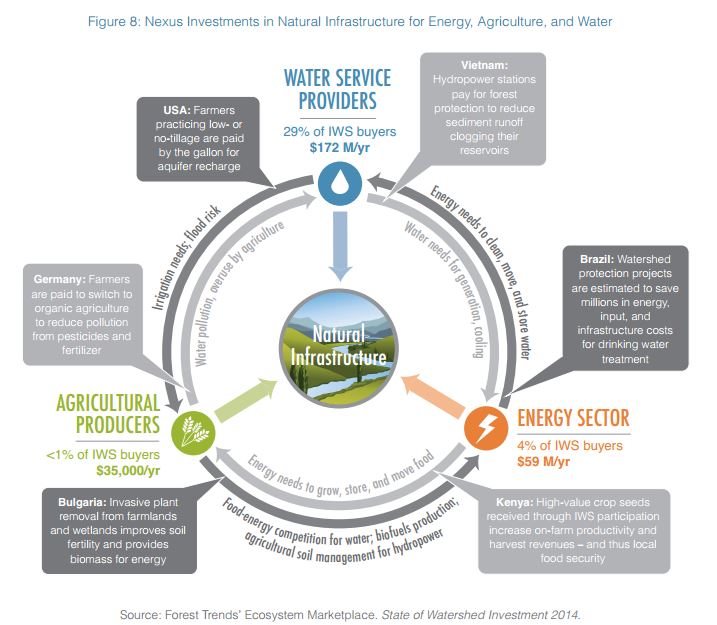Water, Energy, Food: Nexus Thinking Catches On, But Nexus Spending Lags
The tremendous demand human society has for water, food and energy is only expected to increase. And as sectors search for ways to apply integrated solutions that address the needs of all three sectors, they are too often leaving out a critical component – nature – says Ecosystem Marketplace’s most recent report on watershed investments.

14 January 2015 | Brewing giant MillerCoors recently slashed the amount of water and energy it uses to produce barley for its beer, and it did so without losing yields. How? In part by planting vegetation alongside streams and restoring wetlands, which saved them the cost of filtering water before discharging it
They’re hardly alone. All around the world, companies and even cities are learning that the wetlands, dunes and sea grass they once took for granted act as natural buffers against hurricanes, enhance water quality, and save energy and resources that would otherwise be spent to construct and operate gray infrastructure.
In the new lingo of resource management, they’re recognizing the water-energy-food nexus and the important role nature – and, more specifically, natural infrastructure – plays in this nexus.
The concept of natural or “green” infrastructure is replacing the old-school “gray” infrastructure of concrete and steel that has traditionally been used to address water, energy and food security challenges.
Unfortunately the success stories are the exception that proves the rule, as investment in green infrastructure to solve nexus challenges often falls short of its potential, according to Ecosystem Marketplace’s State of Watershed Investments 2014 report. The survey tracks globalinvestment in watershed services (IWS), and it finds investment lagging potential except in those cases that address interrelated issues such as reducing water use and pollution in agriculture or in increasing resilience to flooding and wildfires.
But when it comes to using nature-based solutions to manage water-related energy risks and ensure sufficient crop production for growing populations, investment drops off precipitously. Investment also remained low when it came to complementing gray infrastructure with green elements, such as a hybrid coastal defense system that uses a mix of wetlands, dunes, and built seawalls and levees.
Investing in the food and energy security side of the nexus is crucial because of these sectors’ tremendous water risk exposure. According to CDP’s Global Water Report 2014, 82% of the energy sector is exposed to water risk while 77% of consumer industries that include food and beverage companies are affected. Current investments in natural infrastructure, which can help manage risk, doesn’t reflect the looming threat of water scarcity and other forms of water risk.
Report author Genevieve Bennett says awareness is a big part of the problem. Maybe, she says, companies haven’t addressed water risk because water is still relatively cheap, making the associated financial impacts of water risk appear lower to a business than the true costs. Better data on ecosystem services values and on the ‘return on investment’ for conservation would be a big help. There are also uncertainties in terms of long-term regulatory drivers: the report finds that policy support for natural infrastructure is often missing or inconsistent.
The report does note cases where natural infrastructure is being implemented to address the energy and food side of the nexus. In Brazil, for instance, IWS ventures that protect watersheds are estimated to save millions in reducing energy use for water treatment.
But if the challenges of the water-energy-food nexus are going to be solved, investments in natural solutions from all three sectors must be scaled up.
Please see our Reprint Guidelines for details on republishing our articles.



